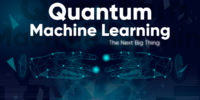The realm of quantum computing brings unparalleled promise and potential, offering the ability to solve complex problems at speeds unimaginable with classical computers. However, quantum computers are highly susceptible to errors due to the delicate nature of quantum bits or qubits. Quantum error correction becomes crucial to harness the true power of quantum computing. In this article, we’ll delve into the intricacies of quantum error correction and provide quick tips to navigate and mitigate errors effectively. ⚛️ ️
Understanding Quantum Errors
Quantum computers operate on the principles of superposition and entanglement, allowing them to perform computations at an exponential scale. However, this sensitivity to quantum states makes them susceptible to errors caused by various factors, including environmental noise, temperature fluctuations, and hardware imperfections.
The Need for Quantum Error Correction
Quantum error correction is a set of techniques designed to detect and rectify errors in quantum computations. Unlike classical bits, which can exist in states of 0 or 1, qubits exist in a superposition of states. This inherent complexity demands innovative approaches to error correction to ensure the reliability of quantum computations.
Quick Tips for Quantum Error Correction
1. Implement Quantum Error Correction Codes
Quantum error correction codes, such as the well-known surface code, are essential tools for mitigating errors in quantum computations. These codes encode quantum information redundantly, allowing for the detection and correction of errors without directly measuring the quantum state, which could introduce further errors.
2. Quantum Entanglement for Error Detection
Leverage the unique property of quantum entanglement for error detection. By entangling qubits, errors in one qubit can be detected by observing the state of its entangled partner. This method enables the identification of errors without direct measurement of the qubits involved.
3. Active Error Correction with Qubits
Explore active error correction strategies using additional qubits dedicated to error detection and correction. By employing quantum gates and algorithms designed for error correction, it’s possible to actively address errors as they occur, enhancing the overall reliability of quantum computations.
4. Employ Decoherence-Free Subspaces
Decoherence, caused by interactions with the environment, is a major source of quantum errors. Implementing decoherence-free subspaces involves encoding quantum information in states that are less susceptible to environmental influences, providing a workaround for some error-inducing factors.
5. Quantum Metrology for Error Monitoring
Utilize quantum metrology techniques for precise error monitoring. Quantum sensors can be employed to measure and quantify errors in quantum computations. This data can then be used to inform error correction strategies and improve the overall fidelity of quantum computations.
6. Hybrid Quantum-Classical Error Correction
Combine the strengths of quantum and classical error correction methods in a hybrid approach. Classical error correction can be used to rectify errors that are beyond the capabilities of quantum error correction codes, creating a comprehensive and robust error mitigation strategy.
Conclusion: Navigating the Quantum Error Landscape
Quantum error correction is pivotal for realizing the full potential of quantum computing. As the quantum computing landscape evolves, implementing effective error correction strategies becomes increasingly crucial. By incorporating these quick tips, researchers and practitioners can navigate the complex quantum error landscape and pave the way for reliable and scalable quantum computations. Quantum computing enthusiasts, buckle up for a quantum error correction quickfix journey!








